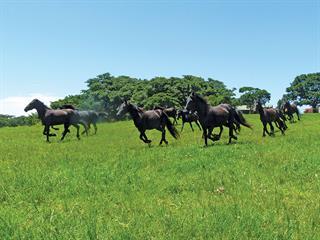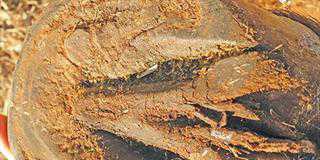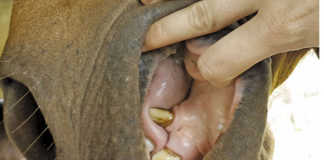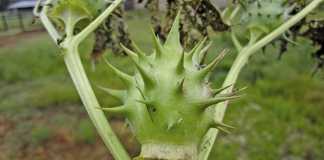
The term ‘gait’ refers to the way in which a horse moves. In racing, for example, speed is important, and horses are bred to walk, trot, canter and gallop. Each of these movements is a specific gait. The walk is a four-beat gait that averages about 6km/h. The trot is a two-beat gait that has a wide variation of speeds, but averages about 12km/h. The three-beat canter is typically just over 20km/h, and the gallop is a fast four-beat gait, averaging about 45km/h.
‘Gaited horses’, by contrast, are “breeds that have been selectively bred for their natural gaited tendencies; that is the ability to perform one of the smooth-to-ride, intermediate speed, four-beat horse gaits”, according to Equus magazine. These breeds are far more comfortable to ride and it has been suggested that they are more stable on slippery surfaces, such as ice, as they always have at least one foot on the ground. This is why a gaited horse is known as a ‘singlefoot’ in the US.
South African gaited breeds
Gaited horses have existed for thousands of years and were described in the writings of the ancient Hittites. The various four-beat intermediate horse gaits, all of which are faster than a walk but usually slower than a canter and always slower than a gallop, were known collectively as ‘ambling’ in England. In the Middle Ages, jennets and palfries bred to ‘amble’ were deemed suitable mounts for women.
In South Africa we call these gaits the ‘triple’ (as three hooves are off the ground at any one time) and ‘umhambo’ which translates as ‘motion’ in Xhosa. Both the Transkei and Basuto pony breeds are known to be gaited and this trait is also occasionally seen in their near-relative, the Nooitgedacht. Another indigenous South African breed that is gaited is the Kaapse Boerperd.
Designer gene
Recent research has shown there is a dominant gene, DMRT3, that determines the ability to pace or amble in certain breeds. The gene codes for both the four-beat lateral gait (rack), where the footfalls are right rear, right front, left rear, left front, and the four-beat diagonal gait (foxtrot), where the sequence is right rear, left front, left rear, right front. The Transkei pony can do both.
There is also a two-beat gait (pace), where the sequence is right hind, right fore together, left hind, left fore together, coded by the same genetic mutation. With gaits now known to be highly heritable, breeders can use gaited horses in their selection programmes, rather than trying to train non-gaited horses such as English Thoroughbreds to ‘umhambo’. It also points to the wisdom of breeding for these gaits in the Transkei pony, whose main function is comfortable transport.
These ponies are used by rangers to keep livestock off the roads to prevent accidents. Gaited horses are also ideal for tourists – who are not always experienced riders – and are more comfortable for long scenic excursions.













